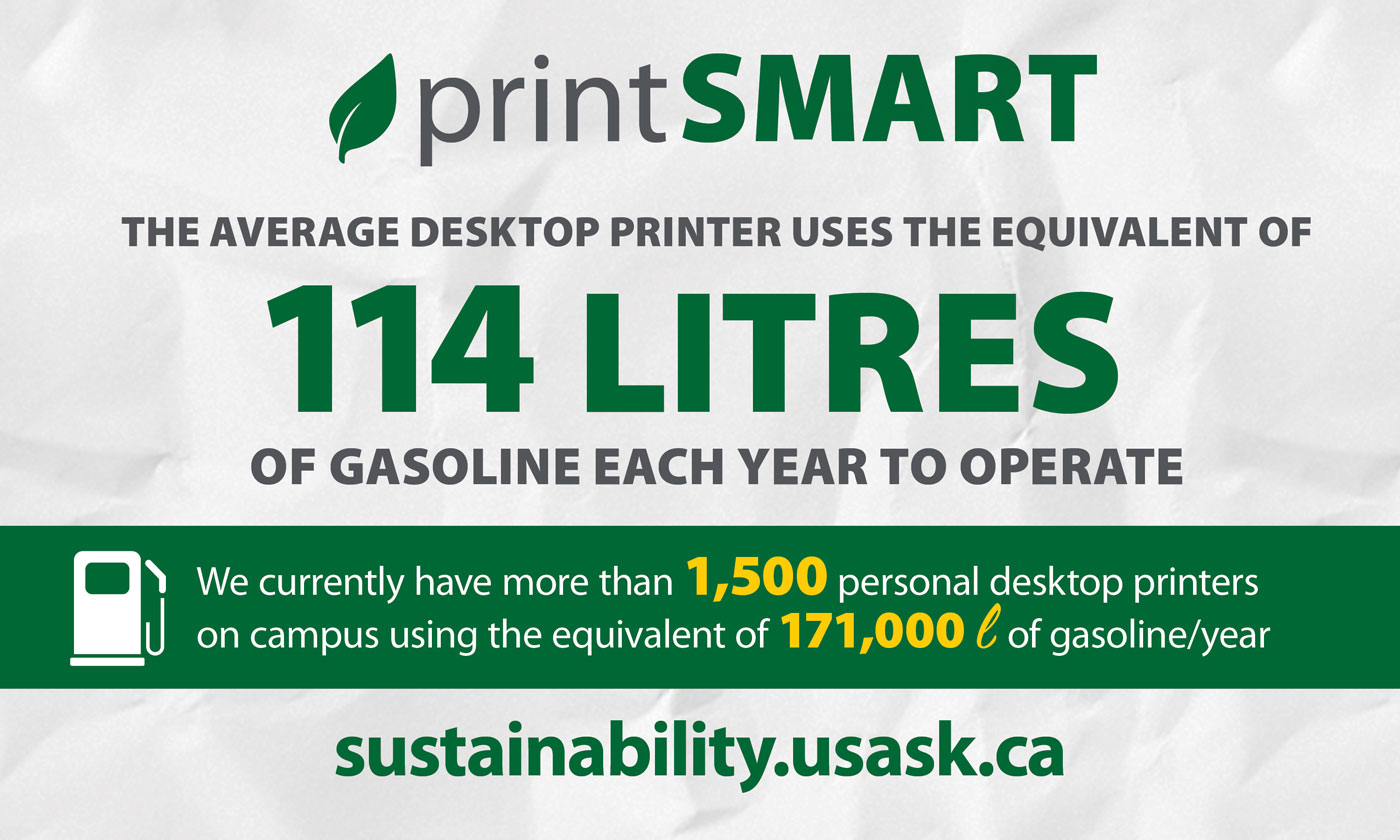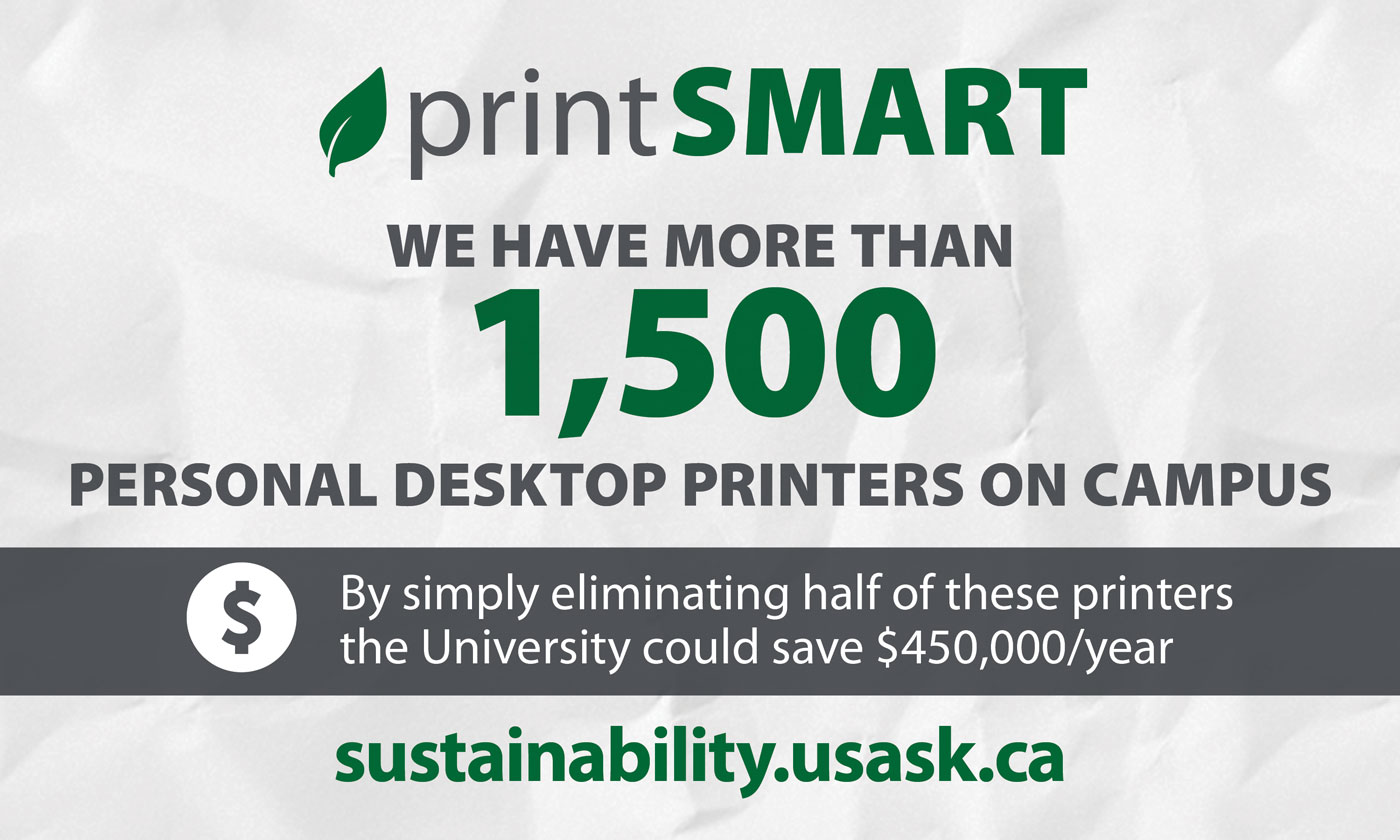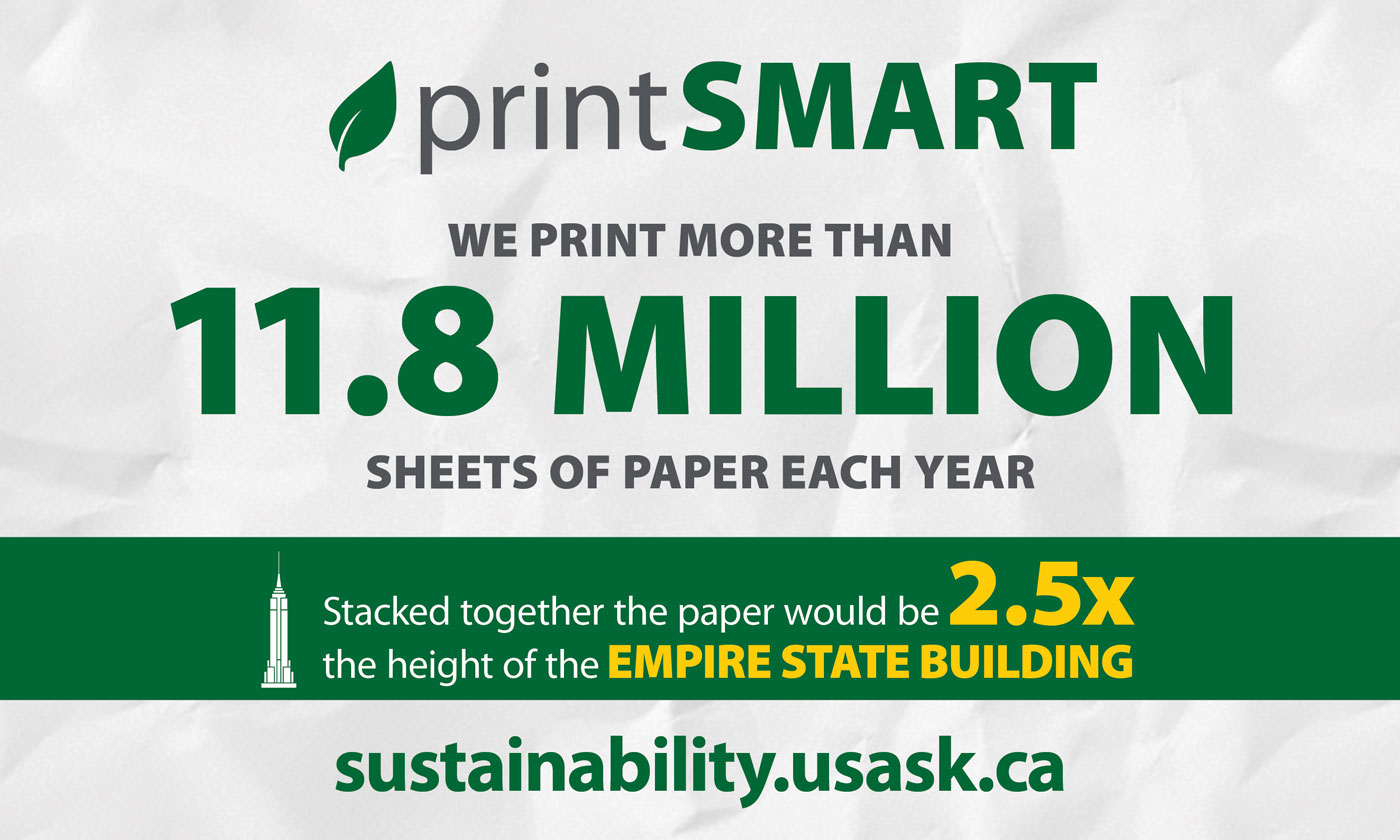Rethinking printing
Tips for sustainable printing on campus.
By Shari Baraniuk, CIO, Information and Communication TechnologiesLet’s talk numbers first

Prior to shifting to a remote work situation during COVID, our stats show that as a collective, we were printing an average of 11.8 million sheets of paper each year. This translates to 1416 trees! Of this amount, approximately 3.9 million sheets were colour printing. While colour may account for only 33% of our total printing, it accounts for 75% of our costs.
The environmental and financial impacts associated with the supplies we use for printing are also high. For example, 11.8 million sheets of paper per year requires the equivalent of 22.7 Olympic-sized swimming pools worth of water during production and disposal. Used toner cartridges can take up to 1000 years to fully decompose.

The more than 1,500 personal desktop printers on campus pose another challenge for sustainability. They are much less energy efficient than multi-function copy machines and generate more waste both from the manufacturing of the inks and toners used as well as with the excess inventory of ink cartridges.
Another interesting number is that between August 1, 2020 and July 31, 2021, when many of us were working from home, our total printed page count was less than 1.5 million pages, representing an 87% decrease in overall printing. This has got me wondering - now that we are continuing to ramp up on-campus activity, how can we continue to minimize our printing footprint?
Top tips for sustainable printing

The President’s priority on sustainability highlights that “USask plays a vital role in nurturing, empowering, and unleashing the curiosity that will allow us to imagine a brighter, more sustainable future.” This call to action asks each of us to explore how we work, discover new ways to adapt, and make improvements that help USask become more sustainable.
If we look at the choices we had to make while working from home during the 2020-2021 academic year, we see that we became less dependent on paper copies for things such as course outlines, assignments, and contract signing. So, what did we learn this past year that could help us to not move back to pre-pandemic printing levels?
- Use digital options: Continue to use Canvas, our Learning Management System, and our Academic Technology toolkit to their fullest extent to maintain digital copies of syllabi, course materials, assignments and tests.
- Minimize desktop printers: Most departments/units should have access to one or more high-volume, multi-functioning printers. Overall, these printers consume less resources than desktop printers. If you do not have access to one, reach out to our IT team for options. And visit USask's sustainability website for instructions on how to return your desktop printer.
- Think sustainably: If you must print something, ask yourself: Does it need to be in colour? Can it be double sided? Can you reuse paper? Double check to make sure you are making decisions with sustainability in mind.
- Rethink paper processes: If you or your department/unit has any significant paper-based processes, please connect with your college coordinator or IT support to discuss how these processes can potentially be digitized.
While these may seem like small changes, by rethinking printing on campus we can minimize our environmental and financial impact to strive to be the university the world needs.
Shari Baraniuk, ICT, Associate Vice-President and CIO
Technologyy Plan 2025
